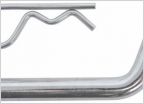-
Welcome to Tacoma World!
You are currently viewing as a guest! To get full-access, you need to register for a FREE account.
As a registered member, you’ll be able to:- Participate in all Tacoma discussion topics
- Communicate privately with other Tacoma owners from around the world
- Post your own photos in our Members Gallery
- Access all special features of the site
Tail Light Crazing
Discussion in '3rd Gen. Tacomas (2016-2023)' started by charles.headlee, Oct 22, 2019.


 Toyota parts online--Free shipping
Toyota parts online--Free shipping Raptor style lights for OEM grill?
Raptor style lights for OEM grill? 2023 mud flaps
2023 mud flaps Looking to lift my truck
Looking to lift my truck Wheel tire size help
Wheel tire size help Is there a blank for the USB plug in the dash?
Is there a blank for the USB plug in the dash?











































































